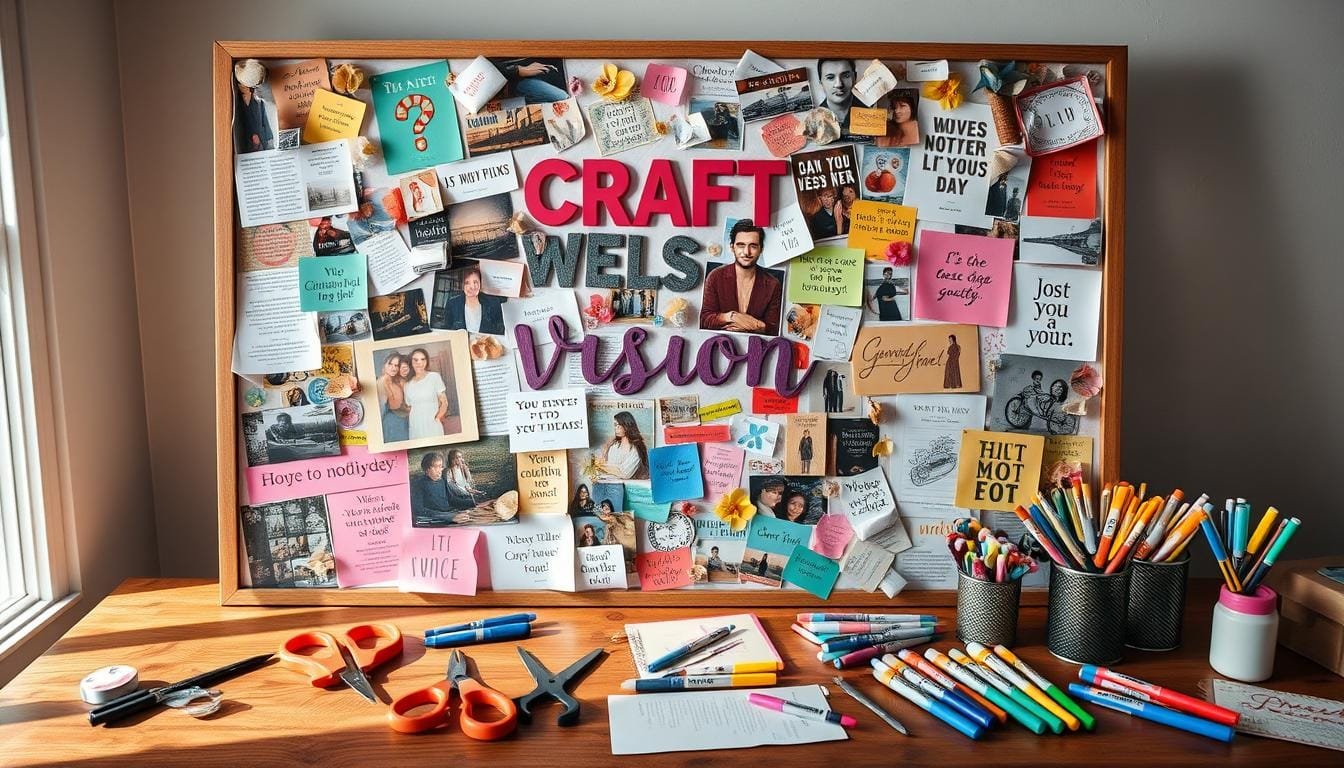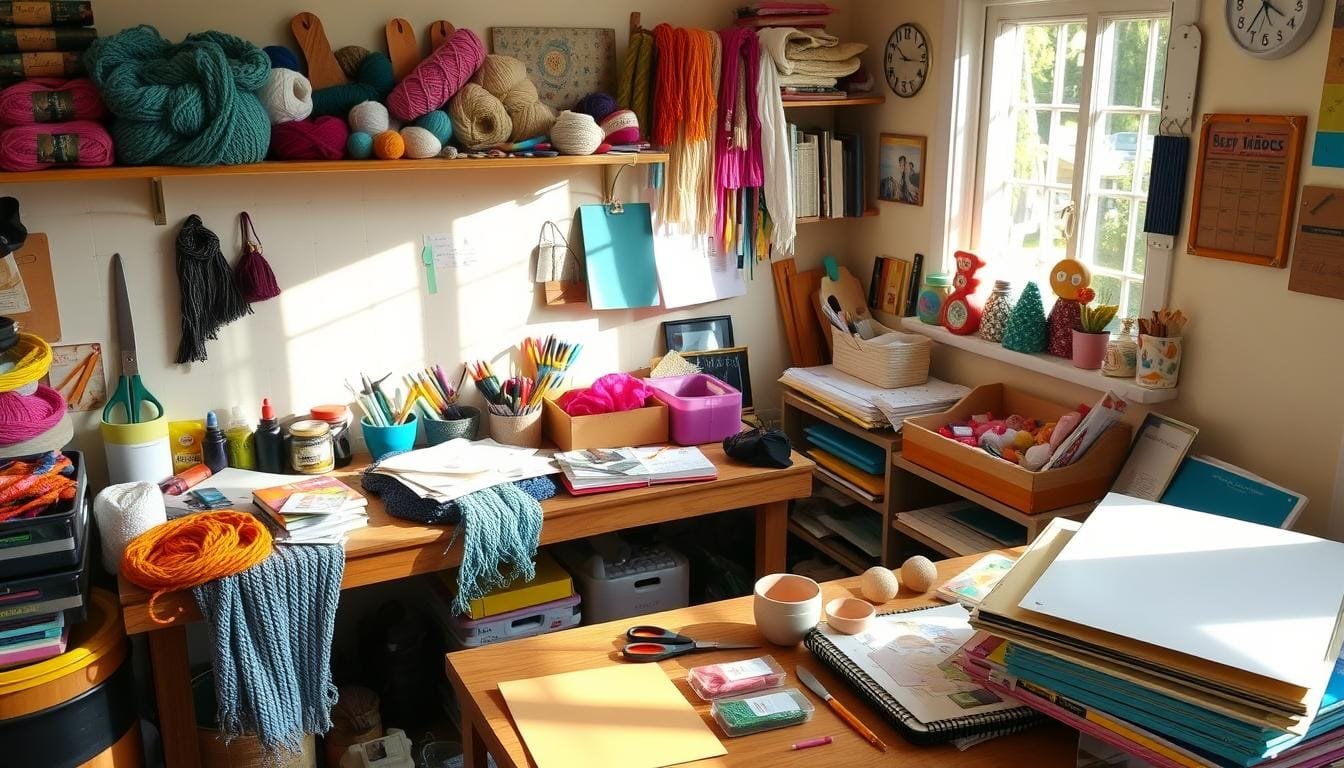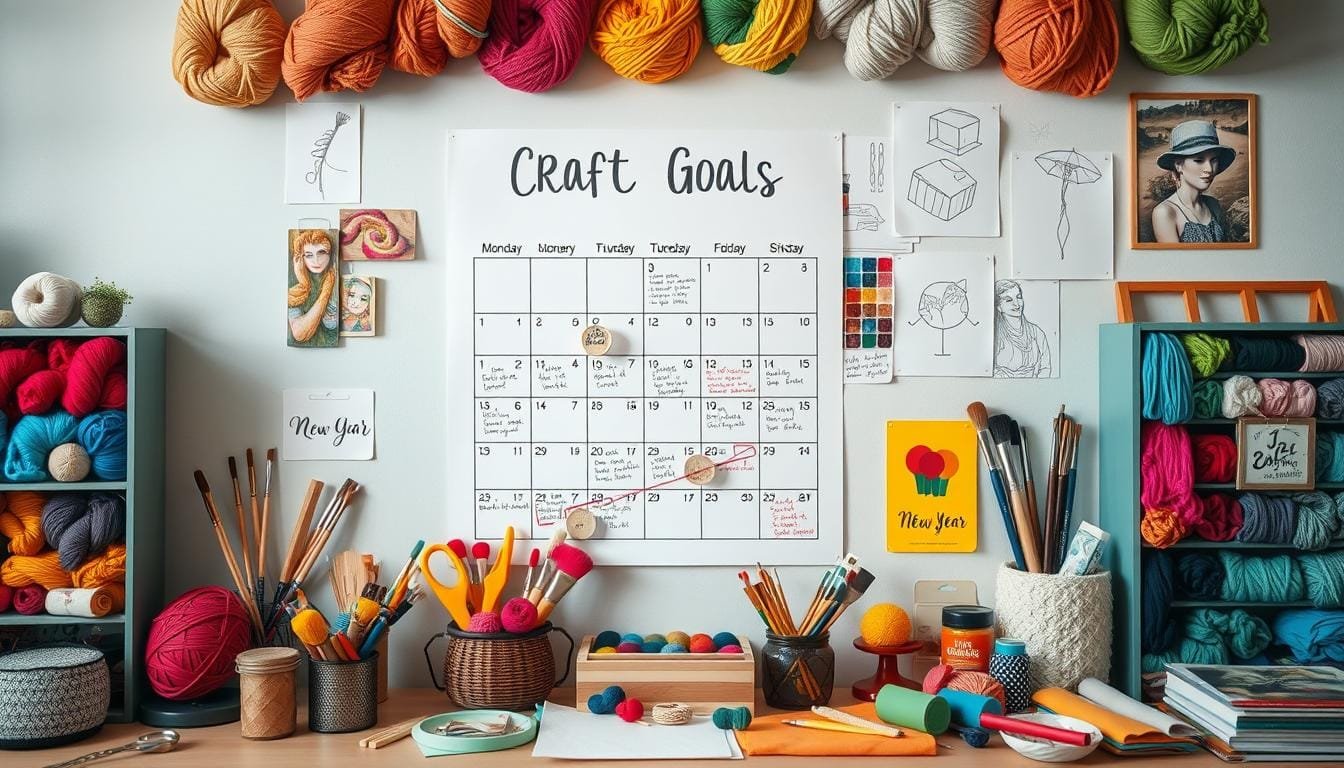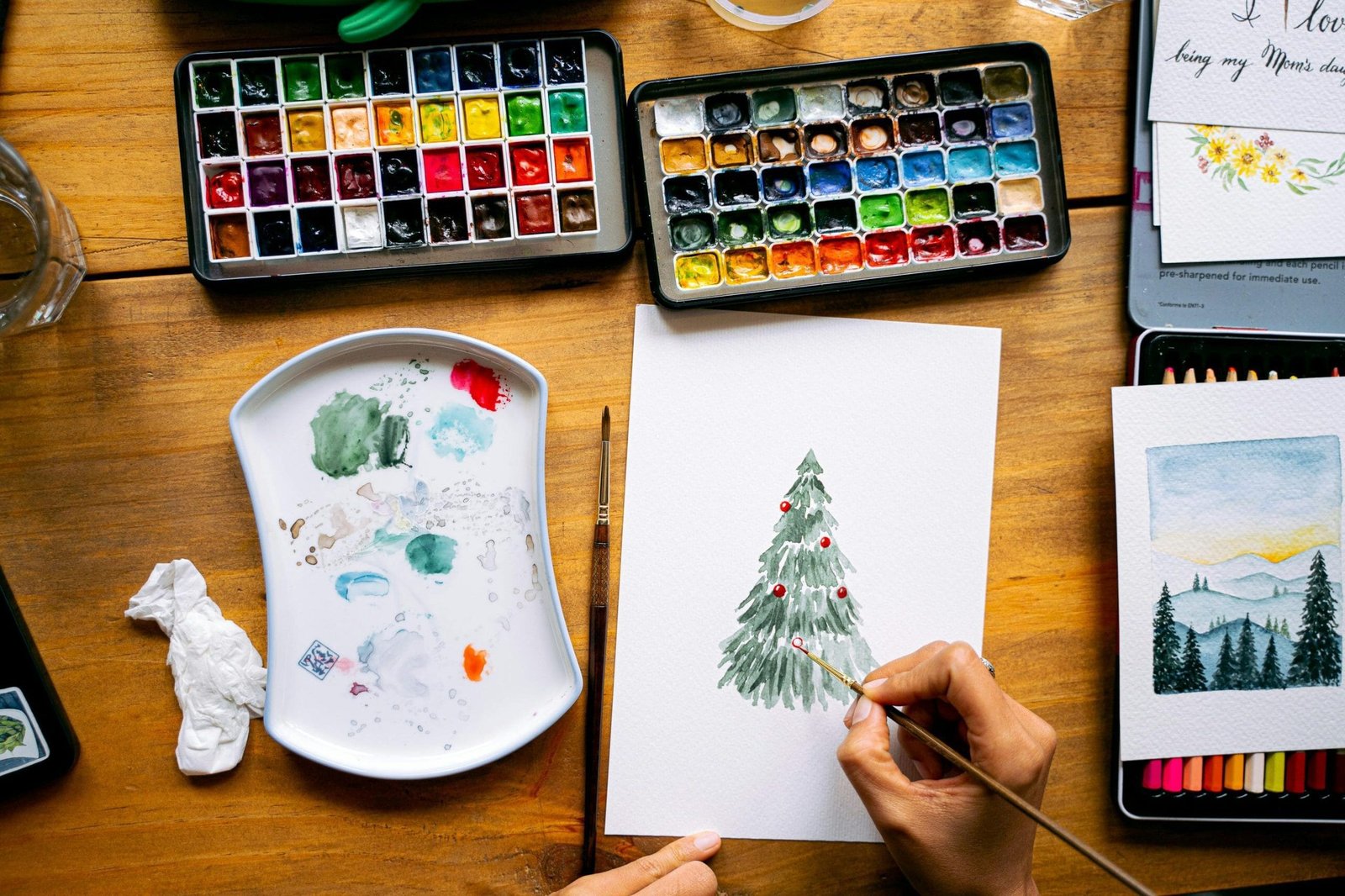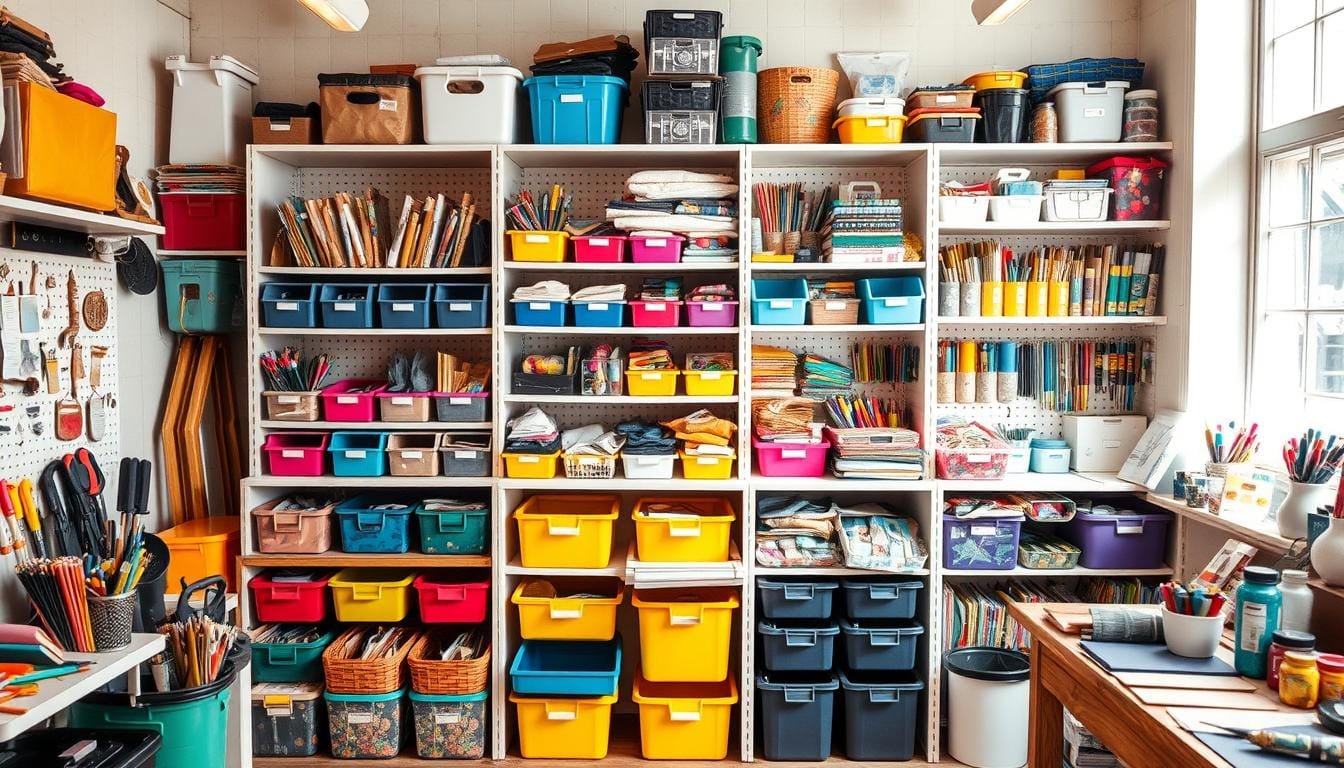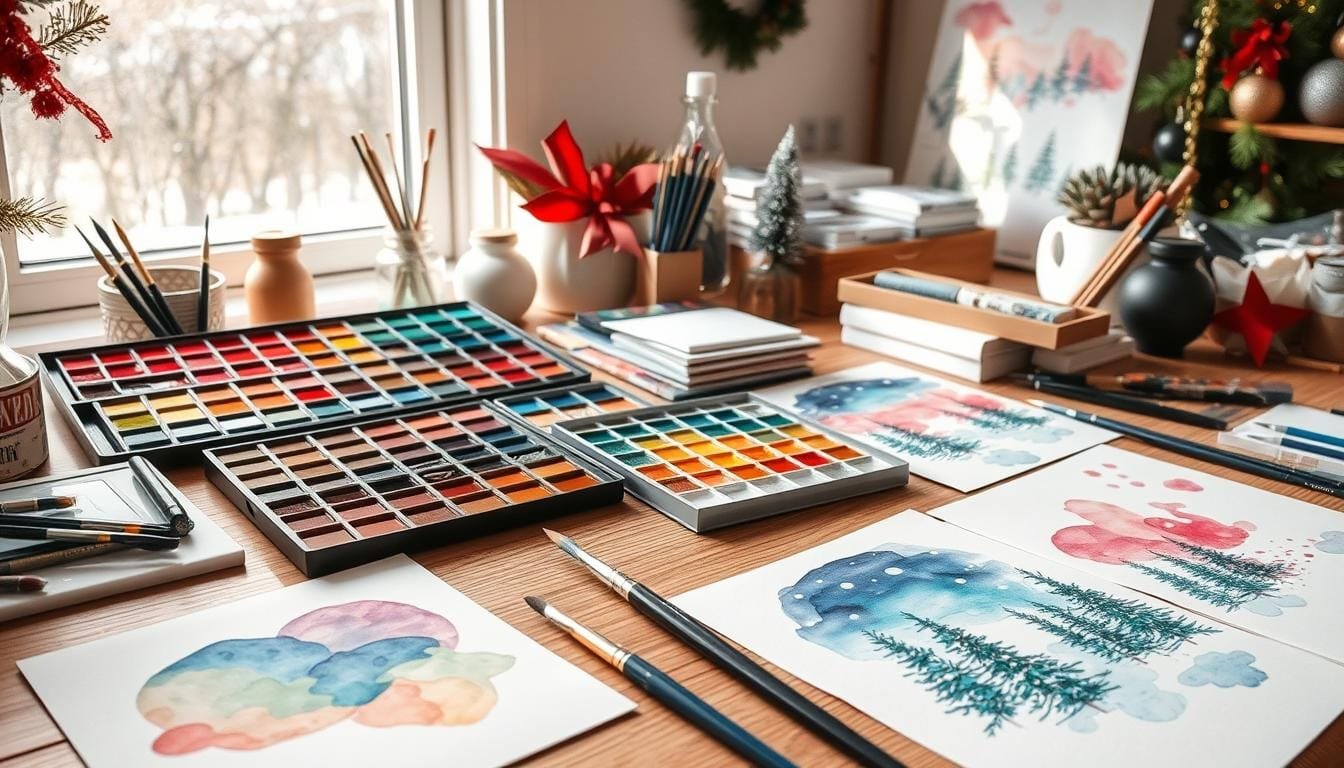Easy Watercolor Painting Ideas for Beginners
Watercolor painting is a great way for beginners to start making art. It doesn’t cost much, and you can make beautiful art fast. You can mix watercolor with other paints like acrylic and gouache.
Watercolor paints dry fast. This lets you layer colors and get bright, clear effects. This article will show you 12 easy watercolor ideas and techniques. You’ll learn about mixing colors, using brushes, and more.
You’ll also see how to mix watercolor with ink drawing. It’s a fun way to explore your creativity with watercolor painting!
Key Takeaways
- Watercolor painting is a beginner-friendly medium with affordable materials and quick results.
- Versatile watercolor paints can be used with other art mediums like acrylic and gouache.
- This article covers 12 easy watercolor painting ideas and techniques for beginners.
- Learn about essential skills like color mixing, brush control, wet-on-wet, and glazing.
- Discover how to combine watercolor with ink drawing for unique effects.
Unlock Your Creativity with Beginner-Friendly Watercolor Techniques
Starting your watercolor painting journey can be exciting and a bit scary, especially if you’re new. But don’t worry, it’s easy to begin. By playing with simple patterns and shapes, you can unlock your creativity. You’ll also learn how to mix colors and control your brush.
Explore the Joy of Painting Simple Patterns and Shapes
One great way to begin is by painting geometric designs or repeating patterns. These projects are perfect for beginners because they focus on basic techniques. You’ll learn to blend colors smoothly and use glazing to add depth and brightness.
- Try painting simple shapes like triangles, squares, and circles.
- Play with creating repeating patterns using basic shapes.
- See how blending colors wet-on-wet can create soft transitions.
- Use glazing to layer transparent washes for depth and intensity.
Develop Your Color Mixing and Brush Control Skills
As you get better, you’ll improve your color mixing and brush control. These skills are key for any watercolor artist. You can develop them through practice and trying new things.
- Learn to mix a variety of hues by combining primary colors.
- Try different brush techniques to get different effects.
- Practice controlling water and paint on your brush for precise strokes.
- Experiment with layering and glazing to add depth and vibrancy.
Remember, the most important thing is to enjoy the process. These beginner-friendly techniques will help you build a strong foundation. They’ll let you express your creativity and find joy in watercolor painting.
Geometric Watercolor Patterns: A Harmonious Introduction
Painting geometric patterns is a great way for beginners to learn about color theory and watercolor techniques. Use colors next to each other on the color wheel for harmonious designs. The wet-on-wet method makes colors blend smoothly.
Mastering Color Harmony and Wet-on-Wet Techniques
Trying out watercolor color harmony can spark your creativity. Start with a palette of similar colors like blues, greens, and purples. Then, use the wet-on-wet technique to let colors blend naturally.
Glazing: Layering Transparency for Depth
Glazing adds depth and vibrancy to your watercolor patterns for beginners. Build up layers of transparent color for a sense of depth. This method can make your geometric watercolor paintings look stunning.
These projects are perfect for beginners. They’ll have you creating lively, abstract pieces in no time. Watercolor is very versatile, so let your creativity shine with geometric watercolor patterns.
Simple Watercolor Circles: Dexterity and Color Theory
Painting perfect circles with a brush is a fun challenge for beginners. It boosts your dexterity and brush control. You also get to play with vibrant contrasts of blue and orange-red.
Creating these watercolor circle paintings involves building up layers of transparent washes. This lets you see how colors interact and deepen. It’s a great way to improve your skills and express your creativity.
So, get your watercolor paints and brushes ready. Let’s explore the world of watercolor circle paintings and complementary color watercolor techniques!
For successful watercolor painting circles, keep your brush strokes even. Start with small circles and grow them as you get better. The right mix of water and pigment is key to avoid bleeding or harsh edges.
Once you’re comfortable, try beginner watercolor techniques like wet-on-wet and glazing. Mix blue and orange-red on a wet surface for organic blends. Layering these colors will make your watercolor circle paintings pop.
Watercolor is all about spontaneity and surprises. Let the medium guide your art. With practice, you’ll create stunning watercolor painting circles that show off your skills and creativity.
An Easy Watercolor Still Life: Painting Nature’s Beauty
Watercolor painting lets you capture nature’s beauty. We’ll explore a simple project with a delicate feather. This will help you improve your observation skills and enjoy working with watercolors.
Variegated Washes and Glazing Bring Depth
To create this beautiful still life, you’ll learn two important techniques. Variegated washes blend colors for a soft, gradated effect. Glazing layers transparent colors to add details and realism.
Painting the feather will help you accurately capture its form and texture. This project will challenge your drawing skills and connect you with nature.
This easy watercolor still life is perfect for beginners and experienced artists alike. It’s a chance to enjoy painting nature with watercolor. By using watercolor variegated wash and watercolor glazing technique, you’ll create a beautiful watercolor still life painting that celebrates nature’s beauty.
Beginners Line and Wash: Eucalyptus Branch Exploration
Watercolor painting is a rewarding medium for beginners. The line and wash method is a great starting point. It mixes ink drawing’s expressiveness with watercolor’s fluid beauty. We’ll paint an enchanting eucalyptus branch, using green hues from raw sienna, phthalo blue, and phthalo green.

Combining Ink Drawing and Watercolor Washes
The line and wash technique is perfect for watercolor painting for beginners. First, draw the form and details with ink. Then, add simple, captivating color washes. This watercolor and ink art mix creates a beautiful, organic piece. I like to use these ink pens.
To paint the eucalyptus branch, start with a fine-tipped black ink pen. Draw the leaves and stems’ intricate shapes and patterns. Next, use light, flowing watercolor washes to bring the branch to life. Blend the greens to capture the foliage’s natural variations. The line and wash watercolor technique is great for beginners, offering a structured way to create a beautiful painting.
This line and wash watercolor project helps you practice color mixing and brush control. It’s a great way to create a stunning piece of art. By combining ink drawing and watercolor washes, you’ll discover new levels of creativity and confidence in your watercolor painting for beginners journey.
Watercolor Pebbles: A Calming Composition
Painting watercolor pebbles is calming and fun for beginners. You’ll learn to use masking fluid for crisp lines. This tool keeps the paper white as you add layers of color.
By trying this, you’ll make your watercolor compositions more interesting. The earthy colors of this watercolor pebbles painting are great for beginners. They help you relax and get creative.
Masking Fluid Techniques for Textural Interest
Masking fluid is key for watercolorists, especially for textural effects. Start by applying it in loose shapes to outline your pebbles. Then, layer transparent colors like ochre and sienna over it.
- Try different ways to apply masking fluid, like with a toothpick or small brush, for unique textures.
- Make sure the masking fluid is dry before adding watercolor to get a sharp edge.
- When done, peel off the masking fluid carefully to show the white paper and calming watercolor compositions.
Using masking fluid in your watercolor pebbles painting opens up new watercolor textural effects. It adds depth and interest. Enjoy the process and let the earthy tones lead you to creative happiness.

easy watercolor painting ideas for beginners
Watercolor painting is a great way for beginners to explore their creativity. It’s easy to start because the materials are affordable. You can make stunning art with just a few basic things.
Watercolor paints let you try different techniques. You can mix colors, play with brush strokes, and learn about color theory. This helps you grow as an artist and enjoy the process.
This article shows you many easy watercolor ideas. You can paint simple patterns, still lifes, or even landscapes. By following these tutorials, you’ll learn important skills and unlock your creativity.
To start, you’ll need some basic supplies. This includes watercolor paper, paints, brushes, and more. Beginners should use a simple set, but you can also get a professional set later. Michael’s has a wonderful starter paint set that is very inexpensive and I used when I started watercolor painting. You can see that here. Since I have fallen in love with the art of watercolor, I have upgraded to this Artecho Watercolor Paint set; it still it very budget friendly.
There are also free printable watercolor pages for adults. These feature animals and flowers. They’re a fun way to practice without feeling overwhelmed.
If you’re new to watercolor or want to get better, this article has lots to offer. It’s full of easy watercolor painting ideas, beginner watercolor projects, and simple watercolor techniques. So, pick up your paints and brushes and start creating!
Monochrome Magic: Simplicity in a Single Hue
Watercolor painting is a versatile medium that lets artists explore many styles and techniques. Many beginners are drawn to colorful paintings. But, working with just one color can be mesmerizing and meditative.
Using a single color helps you improve your skills, like layering and using white gouache for highlights. It’s great for beginners to practice brush control and color theory.
Monochrome watercolor art has a rich history. Artists like Kazimir Malevich and Yves Klein made powerful paintings with one color. In interior design, monochrome colors create a cozy, bright, warm, or fresh feel.
Start with Ultramarine Blue, Burnt Sienna, and Titanium White for your monochrome paintings. These colors can create a wide range of values and nuances. They help you master the basics while making stunning paintings.

Let the simplicity of one color guide your creativity. Monochrome watercolor painting is rewarding and can open new doors in your art and personal growth.
Abstract Watercolor Leaves: Loosening Your Style
Painting abstract watercolor leaves is a great way for beginners to loosen up. It lets you focus on the essence of the subject. This approach moves you away from strict realism and into your creative side.
This project helps you play with tone, texture, and the medium’s fluidity. It builds your confidence and lets you find your own style. Exploring abstract watercolor leaves is freeing and enlightening for beginners.
Experienced artists say planning your composition is key. Sketching thumbnails helps create balanced and impactful art. The Rule of Thirds and the 60/40 (or 70/30) Rule guide you in creating interesting compositions.
In recent years, loose watercolor painting has become more popular. It’s all about lively colors and freedom. This shift from control to expression has changed many artists’ styles.
“Watercolour painting is a journey that involves the dance between brush, pigment, and paper.”
Keeping a journal of brush strokes and doodles can really help. Muscle memory in watercolor painting comes from practice. Start simple to avoid feeling overwhelmed.
Watercolor loves experimentation. Try new colors, gradients, and water flows. Joining the watercolor community can inspire and give feedback. A habit tracker or doodle diary helps track progress and improve skills.
Daily doodles build the muscle memory needed for watercolor painting. Embracing the abstract watercolor leaves project can unlock your loose watercolor painting style. It opens up new artistic possibilities.
Doodling Watercolor Clouds: Unleashing Your Imagination
Watercolor painting is a free and expressive medium. It’s especially fun when you let your creativity flow. I love doodling watercolor cloud paintings because it lets me explore without worrying about realism.
To start, I use vibrant watercolor washes on my paper. Then, with a black pen, I add patterns and details to the clouds. This way, I can create unique pieces that show off my style.
This method is great for beginners. It’s all about having fun and experimenting. It helps you build confidence and skills in watercolor painting.

Whether you like soft clouds or bold shapes, doodling watercolors is flexible. You can add as much detail as you want, making your paintings personal and expressive.
So, get your paints, pen, and paper ready. Doodling watercolor cloud paintings is a fun way to enjoy watercolors. It lets you be spontaneous and creative.
Botanical Watercolors: Capturing Nature’s Beauty
Embracing the Changing Seasons with Autumnal Leaves
Watercolor artists find endless inspiration in nature. Painting flowers, leaves, and branches is a great way for beginners to show nature’s beauty. Autumn leaves, with their bright colors, are especially beautiful subjects for botanical watercolor paintings.
To paint these leaves, start with a light wash. Then, add layers of deeper colors. This method helps you create realistic and stunning watercolor autumn leaves.
Exploring the changing seasons is a great way for new watercolor artists to grow. Seasonal watercolor art lets you play with colors and textures. As leaves change, you can capture their beauty in your paintings.
Painting nature with watercolor is calming and fulfilling. It lets you focus on the small details and bright colors of the world around us.
Watercolor artists can create beautiful botanical watercolor paintings by embracing the seasons. Whether you’re new or experienced, autumn leaves are a great subject to start with. They help you explore watercolor autumn leaves and seasonal watercolor art.

Misty Mountain Landscapes: Escaping to Faraway Places
Painting dreamy, atmospheric watercolor landscapes is a great way for beginners to learn and explore. Misty mountain scenes are especially captivating with their hazy hills and moody colors. Start with a grey wash for the sky and distant peaks, then add darker greens and blues for depth.
Painting nature with watercolor helps beginners learn color mixing and wet-on-wet techniques. It also lets them use their imagination and creativity.
Exploring these atmospheric watercolor landscapes is calming and rewarding. It lets you escape to faraway places from home. So, grab your paints and let’s capture the beauty of misty mountains!

Conclusion
Watercolor painting is easy and fun for beginners to explore. This article showed you easy watercolor painting ideas and projects. You can start with simple patterns and shapes, or move on to still lifes, landscapes, and botanical studies.
By following these step-by-step tutorials, you’ll learn important skills. You’ll get better at mixing colors, controlling your brushes, and understanding key watercolor techniques. These include wet-on-wet, glazing, and masking fluid.
There are many easy watercolor ideas to try. You can play with vibrant colors, create soothing monochrome pieces, or explore the beauty of botanical and landscape paintings. So, get your paints, brushes, and a cup of coffee ready. It’s time to start your watercolor painting journey!
Remember, it’s all about enjoying the journey, not just the end result. Try out different simple watercolor techniques and don’t worry about mistakes. They help you learn and grow. With patience and practice, you’ll soon be making beautiful watercolor paintings for beginners.
Source Links
- https://www.watercoloraffair.com/easy-watercolor-paintings-for-beginners/
- https://www.gathered.how/arts-crafts/art/watercolor-painting-ideas
- https://creativelass.com/unlock-your-creativity-5-easy-watercolor-ideas-for-beginners/
- https://www.louisedemasi.com/tips/2024/1/15/11-easy-watercolour-painting-ideas-for-beginners
- https://eastendarts.org/watercolor-techniques/
- https://www.watercoloraffair.com/simple-abstract-watercolor-painting-for-beginners/?tva_skin_id=32/feed/feed/?tva_skin_id=32feedfeed/feed/feed/feed/
- https://medium.com/@schoolbvw/80-ideas-to-draw-watercolor-painting-easy-for-beginners-324947102fe2
- https://www.lexisworksart.com/blog/an-easy-shape-to-start-your-watercolor-practice
- https://littlecoffeefox.com/watercolor-painting-for-beginners/
- https://www.learntopaintwatercolor.com/blog/compositionkeys
- https://amarielangestudio.com/easy-watercolor-painting-ideas/
- https://www.classpop.com/magazine/watercolor-painting-ideas
- https://www.watercoloraffair.com/painting-still-life-in-watercolor/
- https://artofpaintbynumbers.com/blog/80-easy-watercolor-painting-ideas-for-beginners
- https://www.watercoloraffair.com/easy-watercolor-paintings-for-beginners/?tva_skin_id=32/feed/feed/feed/feed
- https://creativenergies.org/easy-watercolor-painting-ideas/
- https://ohshecreates.com/easy-watercolor-painting-ideas/
- https://www.lesliefehling.com/step-by-step-watercolor-painting-my-own/
- https://www.harbourbreezehome.com/easy-watercolor-painting-ideas-for-beginners/
- https://myartaspirations.com/easy-watercolor-landscape-ideas-for-beginners/
- https://www.watercoloraffair.com/10-easy-watercolor-ideas/
- https://blog.paperartsy.co.uk/2023/10/2023-topic-11-monotone-topic.html
- https://www.domestika.org/en/blog/8137-10-free-online-watercolor-classes-for-improving-your-technique
- https://willkempartschool.com/how-to-paint-a-warm-and-cool-still-life-painting-using-2-colours/
- https://www.erikalancaster.com/art-blog/loose-floral-watercolor-painting-process-and-tips-for-abstracts
- https://doodlewash.com/loose-watercolor-style-tips/
- https://www.louisedemasi.com/tips/2024/4/1/building-muscle-memory-in-watercolour-painting
- https://shop.naturalearthpaint.ca/blogs/nep-blog/easy-watercolor-paintings-unleashing-your-creativity-with-simple-techniques?srsltid=AfmBOooIZik9vGBKXEIoHimmOBxoO5xi0FMoKM7_rPdfrCiW4u108MUP
- https://colorfulcreativewatercolors.com/watercolor-journal-prompts/
- https://www.dragonflyspiritstudio.com/planning-a-watercolor-part-2-using-subpaintings/
- https://doodlewash.com/laura-watson-holding-onto-creativity-through-adversity-my-journey-as-a-botanical-artist/
- https://www.thelastpigment.com/blog2/1mo5br8grvk58lj98ksb3jsnwlb2ea
- https://cecilieo.com/watercolor-for-beginners-tutorial-flower/
- https://www.lizsteel.com/watercolourlandscapes/
- https://cindybriggs.com/5-creative-watercolor-painting-ideas-for-beginners/
- https://bvwschool.com/draw-watercolor-painting-easy-for-beginners/
- https://www.paintingzen.com/6-easy-watercolor-painting-ideas-for-beginners/
Jen is a healthcare pro by day and a DIY enthusiast by night, bringing creativity to life on JF Craft Corner! From decoupage to Cricut crafts, she’s all about making DIY magic (and a little mess). She also co-runs The Heart of Mindful Living blog and podcast, inspiring others to refresh their minds and nurture their souls. Her trusty sidekick? Fergus, her chocolate Shih Tzu and certified therapy dog, always on cuddle duty. Jen believes true leadership starts with kindness—and, of course, a little glitter!
